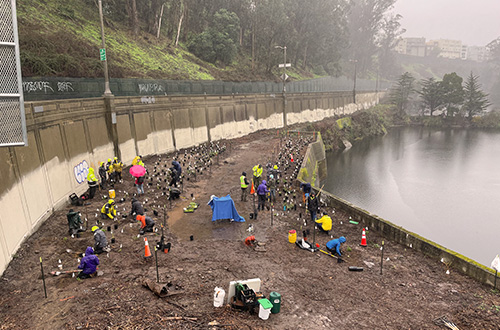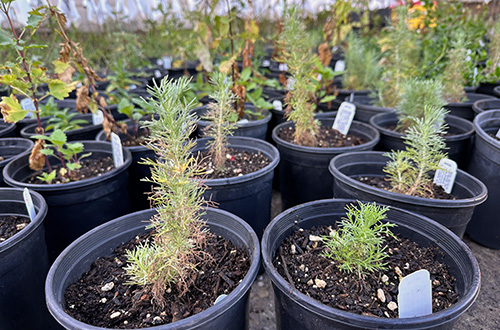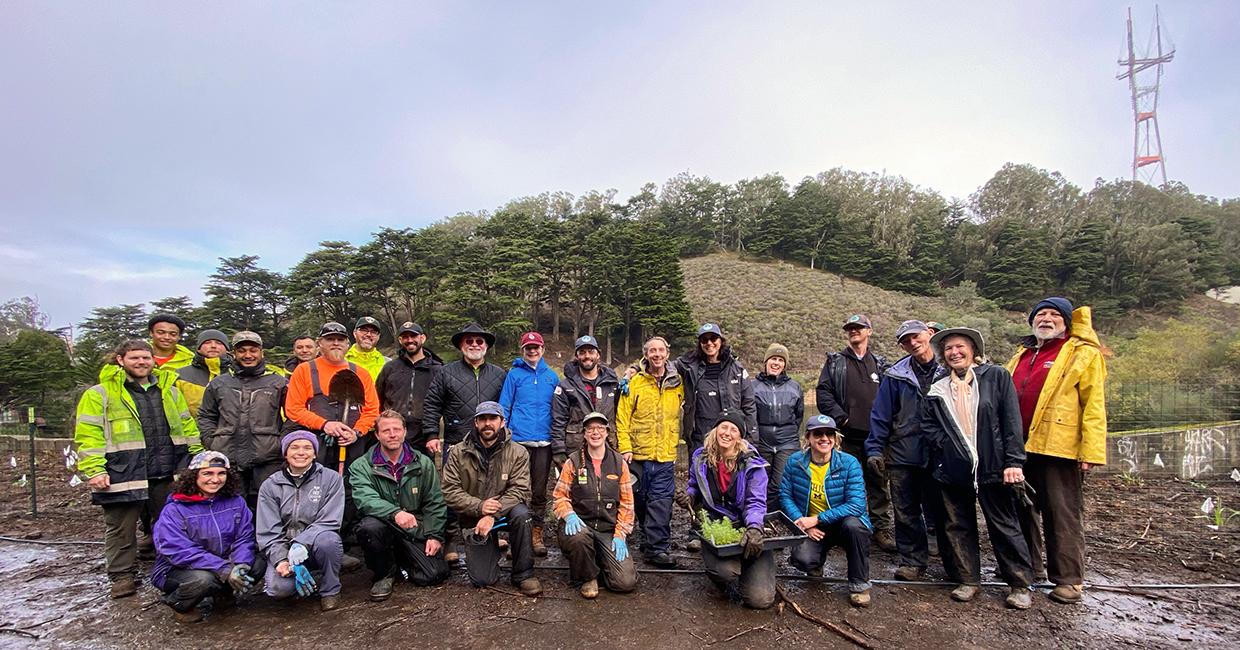On January 9, 2024, the SFPUC’s Natural Resources and Lands Management Division hosted its first volunteer planting day. Thirty volunteers worked through the rain to plant over 300 native plants at Laguna Honda Reservoir. Tucked beneath the forested slopes of Mount Sutro, Laguna Honda Reservoir sits on a small watershed owned and managed by the SFPUC.
“I love trees. They have provided me with a career. We’re always looking to maintain a certain tree health,” explains Damon Spigelman, San Francisco Area Land Manager.

Spigelman has worked in land management with the SFPUC for 24 years. In his role, Spigelman addresses a wide range of issues, such as illegal dumping, encroachments, and balancing vegetation with utility operations. By inviting volunteers out to Laguna Honda Reservoir, Spigelman and his team were able to involve people more intimately with the restoration process. The first step of which was removing a eucalyptus grove and heavy brush from the area in June of 2023.
“Eucalyptus is not a bad species, but it is monocultural. This means that native species can’t survive with it,” Spigelman says.
Eucalyptus trees were first planted on Laguna Honda Reservoir when Spring Valley Water Company fortified an existing lake into a reservoir in 1866. The reservoir supplied drinking water to San Francisco residents until 1906. The massive earthquake that year damaged the pipeline delivering water from Pilarcitos Reservoir to the south and Laguna Honda Reservoir was subsequently disconnected from the City’s water supply. No longer in operation, vegetation began to overtake the idle watershed.
“Eucalyptus groves can kill a forest entirely. Additionally, groves pose a huge wildfire risk,” Spigelman says. Wildfire risk was especially concerning at Laguna Honda Reservoir where vertical walls surrounding the area run up to residential structures.
These factors led the SFPUC to pursue restoration planning, eventually resulting in the removal of certain plant species. In their place, volunteers planted native trees including oak, willow, and toyons. They spread over two pounds of native coastal grassland seeds and installed fencing for protection.

Volunteers’ hard work through the wet morning will have multiple benefits for the years to come. Native trees will be able to support diverse flora and the wildlife corridor that exists on the watershed. Many birds, bees, and coyotes call it home. These trees will also be shorter in height, allowing visitors on the road overhead to view the beautiful reservoir and watershed land.
Spigelman says that this project would not have been successful without the support of the SFPUC’s City Distribution Division, who deliver water to retail customers in San Francisco. “In particular, I want to thank Don Lampe and Bill Teahan for their coordination with us. They provided crane crews to remove trees, plumbers to run water lines to the site, and helped us install a staircase and fencing,” Spigelman recalls.
The planting day was also made possible through a partnership with the San Francisco Rec and Parks Department. This is one of four projects we are collaborating on to rehabilitate native habitats.
With each restoration project, the SFPUC reemphasizes our commitment to our neighbors and wildlife. Planting days like this one not only beautifies the lands in our care but gives the environment a crucial opportunity to foster new growth.
“Our volunteers are providing future generations with a healthy, green space to enjoy. We’re recapturing a native atmosphere so the land can have breathing room to heal itself,” Spigelman says.
Thank you to all our volunteers!


